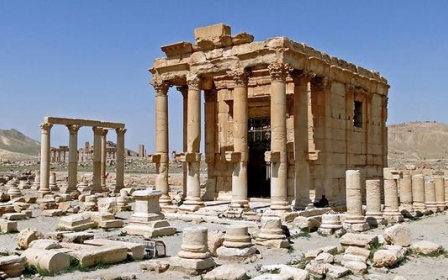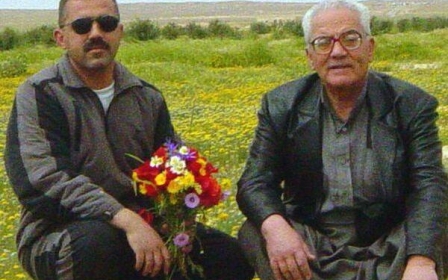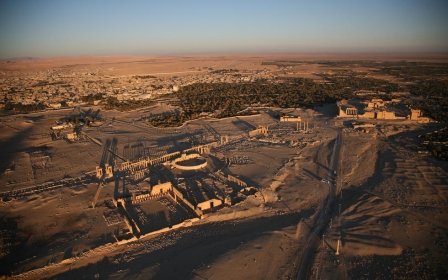IS partly destroys another ancient temple in Palmyra: eyewitnesses

Eyewitnesses say the Islamic State militant group set off explosives, partially destroying another temple in Syria's ancient site of Palmyra on Sunday.
On Sunday afternoon, locals in Tadmor, the modern town adjacent to the ancient Greco-Roman site in central Syria, told BBC that they heard a bomb blast which they believe caused several columns to fall and left only one wall of the Temple of Bel standing.
Mohamed Hassan al-Homsi, an activist from Palmyra who uses a pseudonym, said that explosives, including booby-trapped boxes and barrels, destroyed the inner part of the temple.
"This was the most important temple for tourists and for the people of Palmyra. They used to hold festivals there," al-Homsi said.
However on Monday, Syria's antiquities chief said the temple was largely intact.
"The frontal columns and the cella (interior) of the temple do not appear to have been damaged," said Maamoun Abdulkarim.
"According to the information we received from the town, the temple is still standing, but antiquities staff are not able to enter the site to see close up," he said.
Like many of Syria's ancient sites, the temple had been constructed nearly 2,000 years ago on a location where even older remains had been discovered and had reportedly survived sieges and earthquakes.
The apparent partial destruction of the temple comes a week after the group blew up the nearly 2,000-year-old Baal Shamin temple, another iconic relic at the UNESCO-listed site.
Ahead of the Baal Shamin's destruction, the group posted photos on social media, showing members placing gas bottles and explosives around the temple in preparation for detonation.
IS has had control of the ancient city of Palymra, which is located on several key country-crossing roads, since May.
The militant group has destroyed ancient sites in Syria and Iraq, including the ancient cities of Hatra and Nimrod, and also artefacts in a Mosul museum.
Some analysts have suggested that while the group is motivated to destroy any relics that celebrate gods other than its own, IS also razes sites and objects to maintain its public profile, particularly when it has had a strategic loss on the battlefield.
“It’s all part of a carefully crafted message that ISIS can act with impunity and the international community is incapable of stopping them,” Amr al-Azm, a history professor at Shawnee State University, told the Washington Post.
Middle East Eye propose une couverture et une analyse indépendantes et incomparables du Moyen-Orient, de l’Afrique du Nord et d’autres régions du monde. Pour en savoir plus sur la reprise de ce contenu et les frais qui s’appliquent, veuillez remplir ce formulaire [en anglais]. Pour en savoir plus sur MEE, cliquez ici [en anglais].




